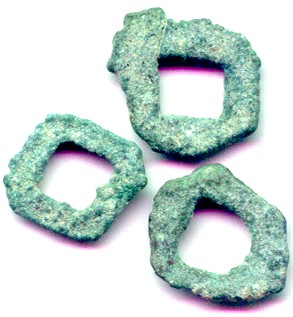|
Home Back |
|
|
|
|
|
|
|||
|
|
|
|
|
TransAsiart |
|
||||
|
|
|||||||||
|
Monies of Kucha's realm |
|
|
|||||||
|
A city-state principality
about halfway between Turfan and Kashgar, in occupied by Chinese in 1944 Eastern
Turkestan. Kucha was occupied twice by China, in 658-670 and in 692-787.
Kucha's Wuzhu Kucha's wuzhu is a small coin, generally bilingual, with one inscription in Kuchéen and a Chinese inscription wuzhu. Inscription Kuchéenne is not yet deciphered, with almost convincing suggestions of Chinese numismatists. The first question is how to correctly arrange this inscription: does the circle have to be at the top or below? There are four, extremely rare preserved copies, one in British Museum, one in the Guimet museum (half of the detail), one published by Huang Wenbi, and one of the Wanxuan collection. Two inscriptions are on the same side, and to read wuzhu, the circle is at the bottom. Because as there are monolingual Kuchéen coins, admittedly the Kuchéen side is on obverse. Finally, there are currencies with décallage of mold on the Chinese face, per Chinese numismatics, the décallage of the mold occurs in the lapel and not in the right, it is a second argument in favor of the thesis that the face in Kuchéen is the right side of the coins. We distinguish four main types: Type 1: The bilingual currencies on a single face; empty lapel. Type 2: currencies with a single face in Kuchéen; empty lapel. Type 3: currencies with the right in Kuchéen and the lapel in Chinese, without edge for the central hole. These currencies exist in two groups, some have Chinese inscription in the axis at 12 hr, the others in the axis at 6 hr, which is upside down. There are several models and several variants of this type. Type 4: small coins with the right in mirrored Kuchéen and the lapel with the inscription quibbles where character zhu is reduced to the element zhu (left right-hand side of the complete character), with an edge of the central hole. These currencies exist in two groups, some have Chinese inscription in the axis at 12 hr, the others in the axis at 6 hr, which is upside down. Dating of these coins is not easy. It is possible to suggest that the cast iron begins when China withdraws from Tarim at the beginning of Jin of the East (317 AD), and that it stops with the reconquest by Tang in 640 AD. Kucha had important copper mines, which allowed it to produce cash, which China, in the grip of invasions and civil war, could not supply from the Han. The number of types and variants allows thinking that the cast iron occurred during a rather long period of time, which is difficult to define with precision. Also, it is difficult to attribute certain type to a certain period and other type to other period. Comparison with the Chinese monies allows certain hypotheses. Coins wore out in Kucha's realm to Bachu, unpolished small coins almost without inscription, weighing even less than a gram:
|
Type 2 : Inscriptions Kuchéenne in the right; flat lapel. 1,36 g, 18,5 mm
Type 3 : Inscriptions Kuchéenne in the right; lapel wuzhu (centered at 6 h). 1,70 g, 21 mm; big hole.
Type 3 : Inscriptions Kuchéenne in the right; lapel wuzhu (centered at 12 h). 1,48 g, 18 mm.
Type 3 : Inscription Kuchéenne in the right; lapel wuzhu (centered at 6 h). 1,46 g, 18 mm. Décallage of mold in the lapel.
Type 3 : Inscription Kuchéenne in the right; lapel wuzhu (centered at 6 h). 1,42 g, 17 mm.
Type 4 : Inscription Kuchéenne inverted in the right; lapel wuzhu (centered at 12 h). 1,46 g, 17 mm.
Рис.2
Рис.3
|
||||||||
Back
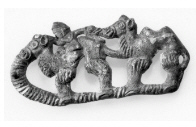
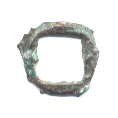
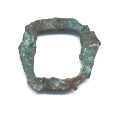 13
mm
13
mm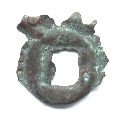
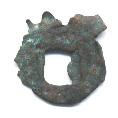 16
mm
16
mm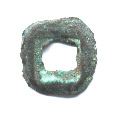
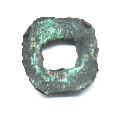 13
mm
13
mm
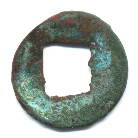
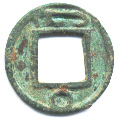
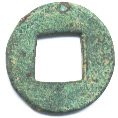
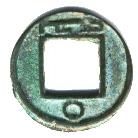
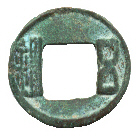
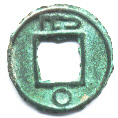
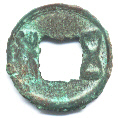
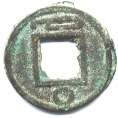
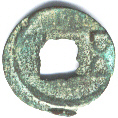
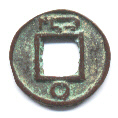
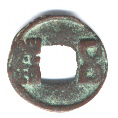
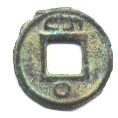
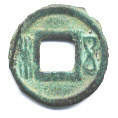


 У Шу
У Шу

